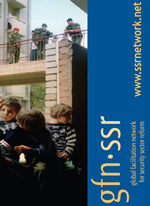Introduction
Somalia has been the world’s purest example of a collapsed state for over a decade. Despite more than a dozen international peace conferences, the country has had no functioning and internationally recognised government since 1991. Some two dozen different armed factions and regional administrations lay claim to different portions of Somali territory.Traditional clan elders and armed clan militia have wielded authority where organised political groups are absent.
This situation may now be changing. In October 2004, after two years of deliberations, the Somalia National Reconciliation Conference in Nairobi, Kenya, concluded with the election of Colonel Abdullahi Yusuf as the president of a Transitional Federal Government (TFG). He was chosen by a clan-based Transitional Federal Assembly of 275 MPs, and his election was followed in December and January by the appointment of Ali Mohamed Geedi, a political newcomer but long-time civil society activist, as the country’s new prime minister.
While the TFG is preparing to return to Somalia, a large number of hurdles will need to be overcome before the TFG can be considered a functioning government, and before it receives significant diplomatic recognition or support from the international community.2 One of the most challenging aspects for reconciliation within Somalia’s divided society and the establishment of a new Somali government will be the re-establishment of the rule of law in Somalia and the complete reconstruction of the human and physical infrastructure required to safeguard and administer it.









